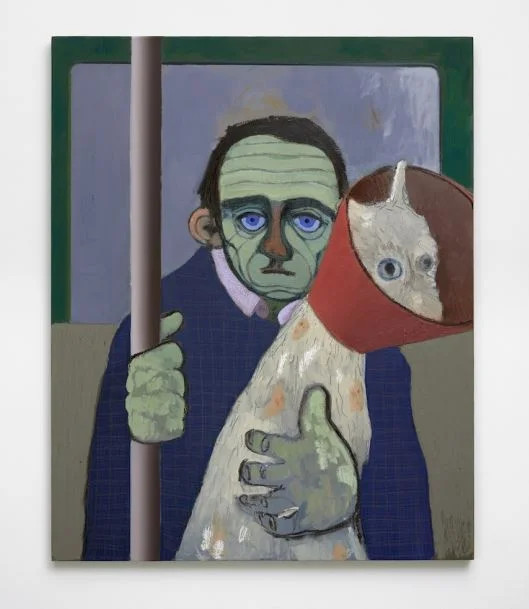This week’s blog post is by Katie Glazier, one of our amazing gallery interns who is a current senior at Boston University. Check our her review of the Institute of Contemporary Art after visiting for the first time!
-----
It’s not something I would regularly admit, especially not to the readers of an art blog, but I had never been to the ICA before last weekend. While this might not seem that shocking, it is definitely a little out of character for me, being that I am in my final year of studying art history at Boston University, and on top of that am an intern at a contemporary art gallery. In my defense, I never intended on leaving it this long to make my first visit. Life just seemed to always get in the way of my plans, and soon weeks, and then months passed without me making a trip. This was why I was so glad to hear that as part of my internship, I would get to finally embark on my long-awaited journey to visit the ICA Boston (if you follow Abigail Ogilvy Gallery on Instagram, you may have caught a glimpse of the interns as we documented our visit to the museum on our Instagram stories!).
Upon entering the museum, I immediately noticed the first exhibit just to the right of the entrance. There is a large wall, covered with what looks like a map of the continents and countries which extend off of the wall slightly. Getting closer, it becomes clear it is made of humanitarian rescue blankets that have been twisted and folded to create the continental shapes. In this exhibit, artist Wangechi Mutu creates an interactive piece to explore the idea of communication. The artist facilitate this contact through hanging pencils from the protruding continents, inviting visitors to write what they would like directly on the wall. Thought provoking questions surrounding the work prompts articulation of thoughts and ideas. As this piece has been on display since mid-summer, the once bare wall is now covered in the scribbles and notes of the visitors to the museum.

Wangechi Mutu, A Promise to Communicate, 2017. Installation view, the Institute of Contemporary Art/Boston, 2017. Photo by Charles Mayer Photography. Source: ICA Boston website.

Sanya Kantarovsky, Violet, 2016, Oil on Linen, the Institute of Contemporary Art/Boston, 2017. Photo by Charles Mayer Photography. Source: ICA website.
Moving on from the entrance, I proceeded with my fellow intern, Keara, to the buildings third floor. We started with the permanent collection, which included a variety of pieces in a wide range of media. This installment of the annual collection exhibition is called “Entangled in the Everyday.” The pieces on display consider the artists interaction with everyday experiences, many using materials that are typically mundane to create meaningful and compelling artwork. Works like Tara Donovan’s Nebulous, which uses Scotch tape to create a delicate installation on the floor, and Nari Ward’s Savior, which includes a shopping cart turned sculpture, demonstrate the transformative use of common objects. The exhibition also focuses on portraiture as another perspective on ordinary life, with pieces such as Sanya Kantarovsky’s Violet, which is an oil painting that depicts a sullen looking man and his dog as they ride the subway. This exploration of the ordinary is anything but mundane—each piece imbues new meaning and gives an insightful outlook to objects and experiences that may be otherwise overlooked.
Next we continued to an exhibition of Jason Moran’s interdisciplinary work, which focuses on the intersection of music (specifically jazz) and visual art. This moody, haunting and soulful exhibition almost mimics the qualities of jazz music itself. The viewer is surrounded by set installations that look like jazz venues of the past, coupled with some of Moran’s charcoal drawings are large screens that present video works created in collaboration with others. I personally enjoyed the immersive quality of the exhibition, as the few rooms it is housed in created a bubble where time was somehow halted to allow the visual and musical components to fully overtake the senses.
Finally, we made our way through the museums most recently added exhibition, “William Forsythe: Choreographic Objects.” Similar to Jason Moran's exhibit, it is very immersive, and follows the current trend of interactive museum exhibitions. Viewers are encouraged to participate in the exhibition, as its main focus in on the body’s movements as choreography. In a way, it ties together nicely with the current installation of the museum’s permanent collection, as it explores an aspect of life that may not initially be viewed as art—our intrinsic bodily movements. Through interacting with each portion of the exhibit, the spectator becomes the subject. Keara and I couldn’t help but smile as we attempted to follow the set of instructions given at each point in the exhibit. We darted our way through swinging pendulums (Nowhere and Everywhere at the Same Time, No. 3, 2015), carefully held quivering feather dusters (Towards the Diagnostic Gaze, 2013), and attempted to climb gymnastic rings hanging from the ceiling (The Fact of Matter, 2009). Overall, the exhibition redefines the viewers understanding of the body as an artistic object and challenges the participants to consider the body’s strengths and limitations.
As we wrapped up our visit, I had feelings of satisfaction from having seen so many interesting and thought-provoking pieces, as well as a slight feeling of regret for not having visited sooner. Now that I have experienced the Institute of Contemporary Art in Boston, I can’t wait until a new exhibition is added and I have an excuse to visit again.
Add a comment